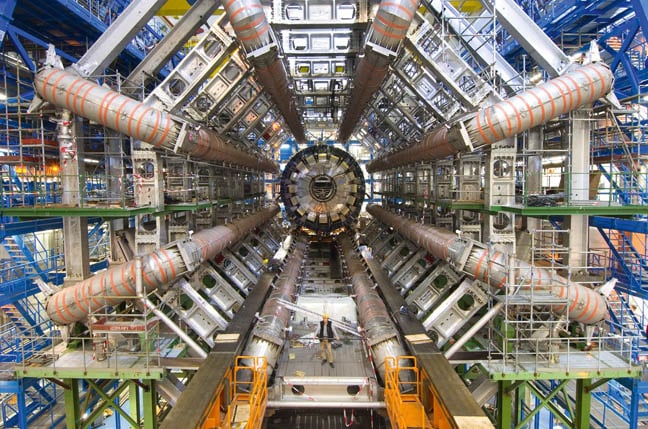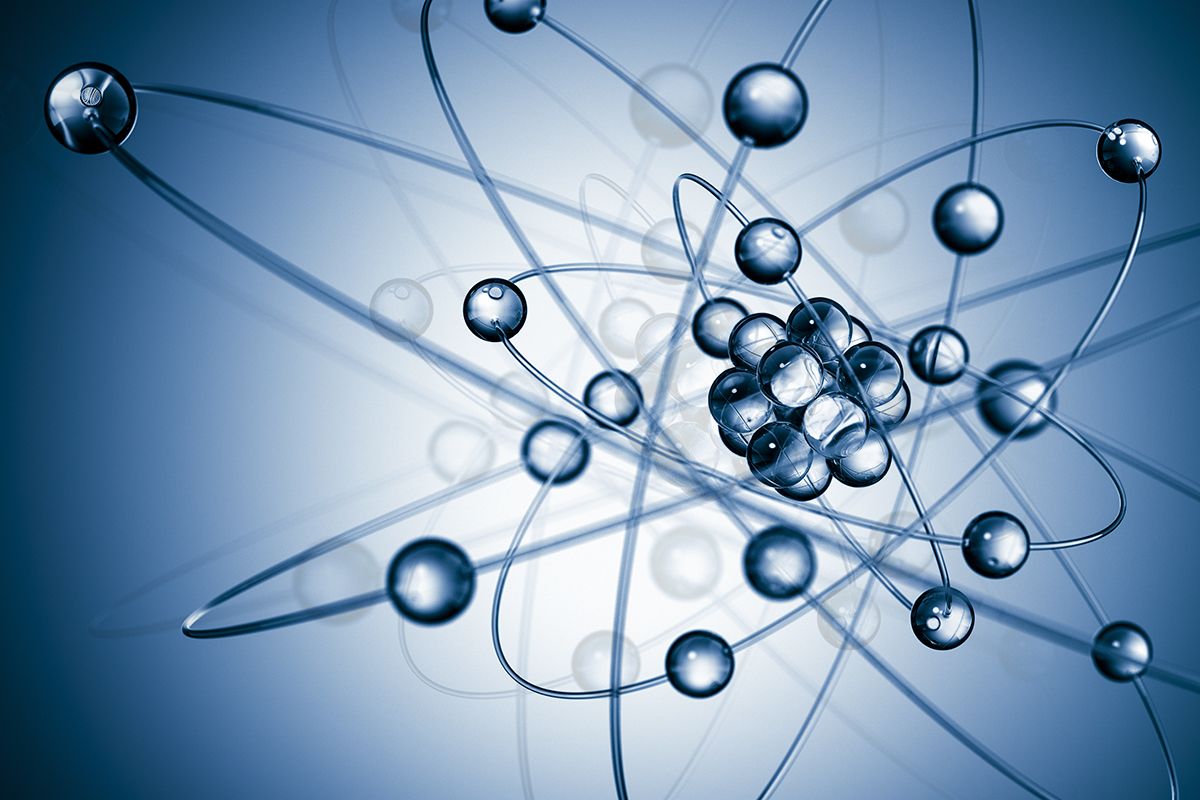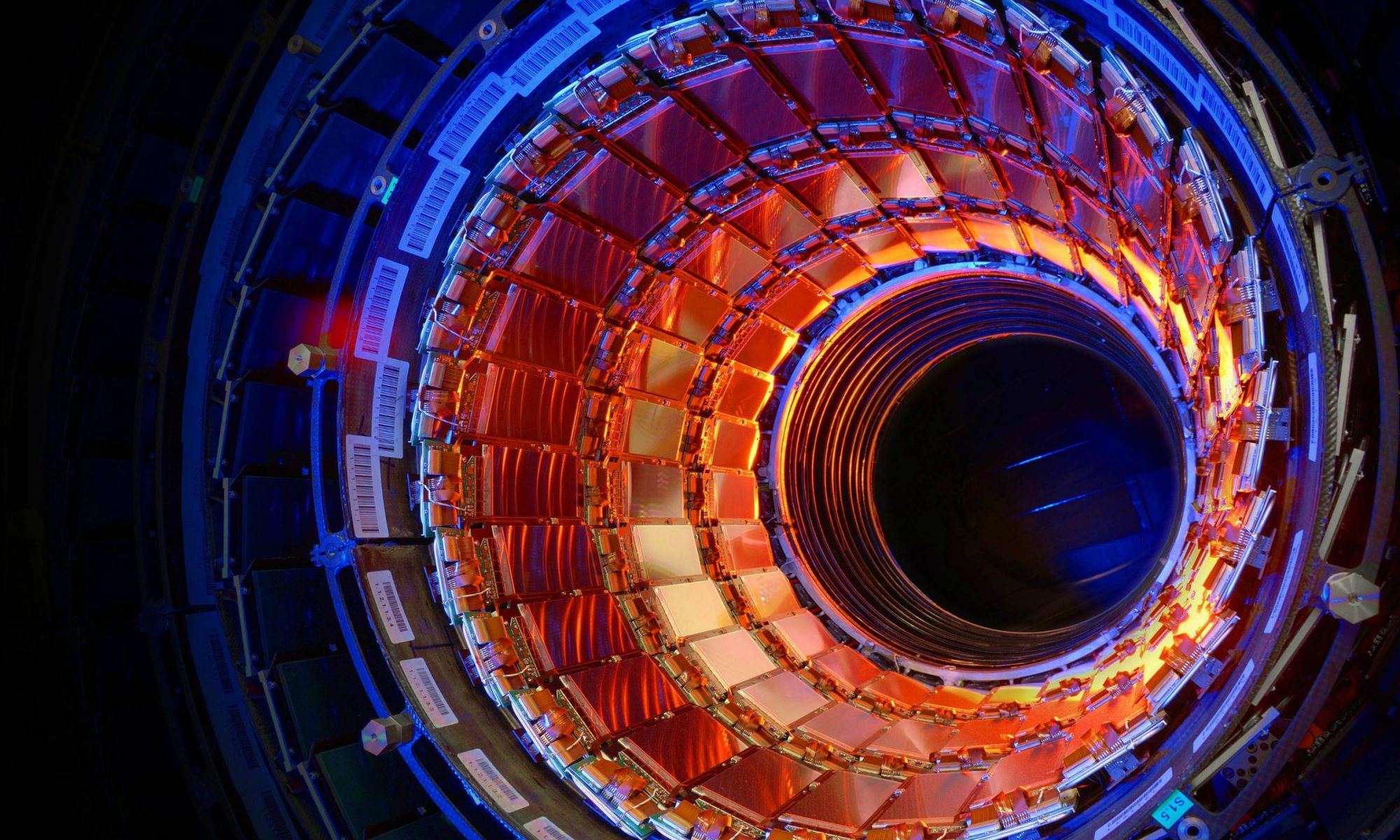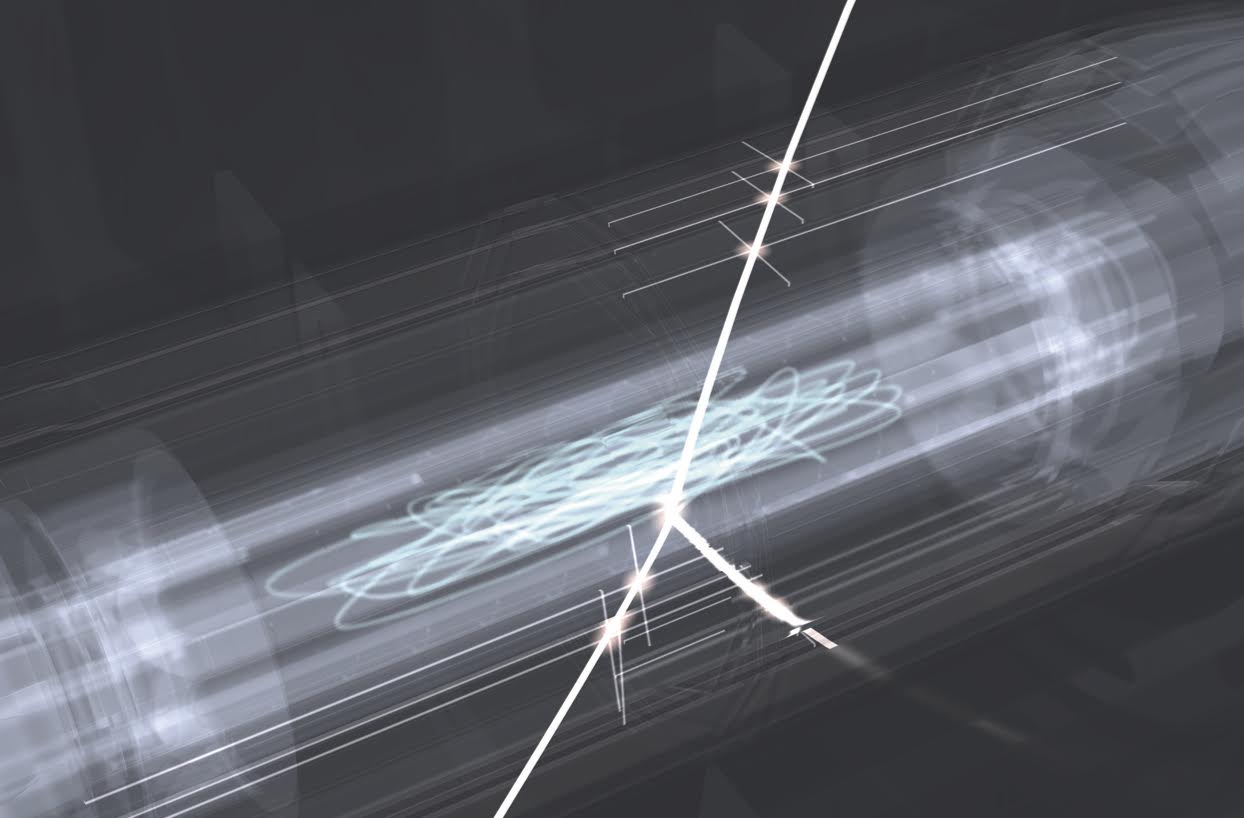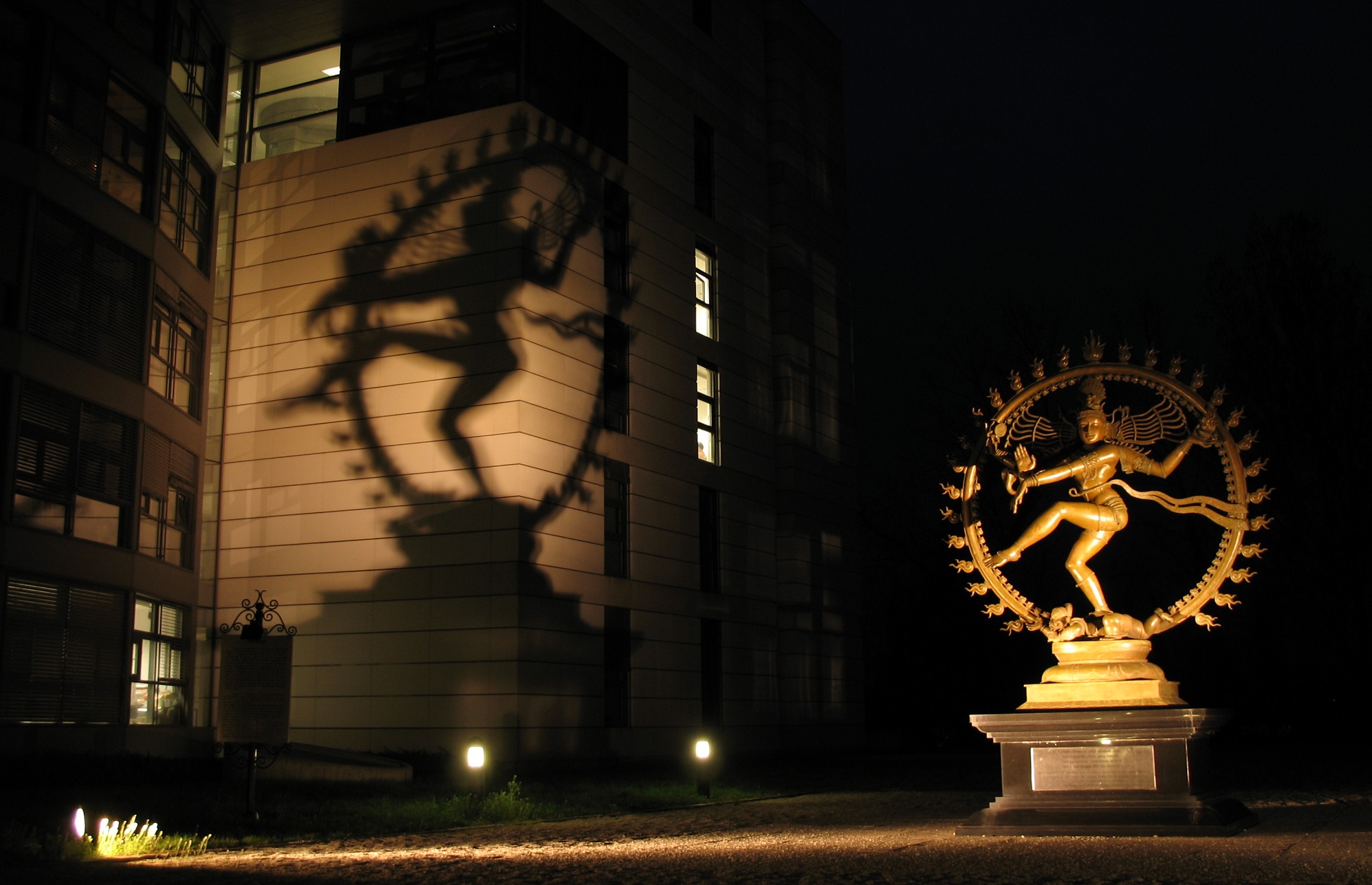Just like Isaac Newton, Galileo and Albert Einstein, I’m not sure exactly when I became aware of Peter Higgs. He has been one of those names that anyone who has even the slightest interest in science, especially physics, has become aware of at some point. Professor Higgs was catapulted to fame by the concept of the Higgs Boson – or God Particle as it became known. Sadly, this shy yet key player in the world of physics passed away earlier this month.
Continue reading “Peter Higgs Dies at 94”CERN Wants to Build an Enormous New Atom Smasher: the Future Circular Collider
One of my favourite science and engineering facts is that an underground river was frozen to enable the Large Hadron Collider (LHC) to be built! On its completion, it helped to complete the proverbial jigsaw of the Standard Model with is last piece, the Higgs Boson. But that’s about as far as it has got with no other exciting leaps forward in uniting gravity and quantum physics. Plans are now afoot to build a new collider that will be three times longer than the LHC and it will be capable of smashing particles together with significantly more energy.
Continue reading “CERN Wants to Build an Enormous New Atom Smasher: the Future Circular Collider”LHC Scientists Find Three Exotic Particles — and Start Hunting for More
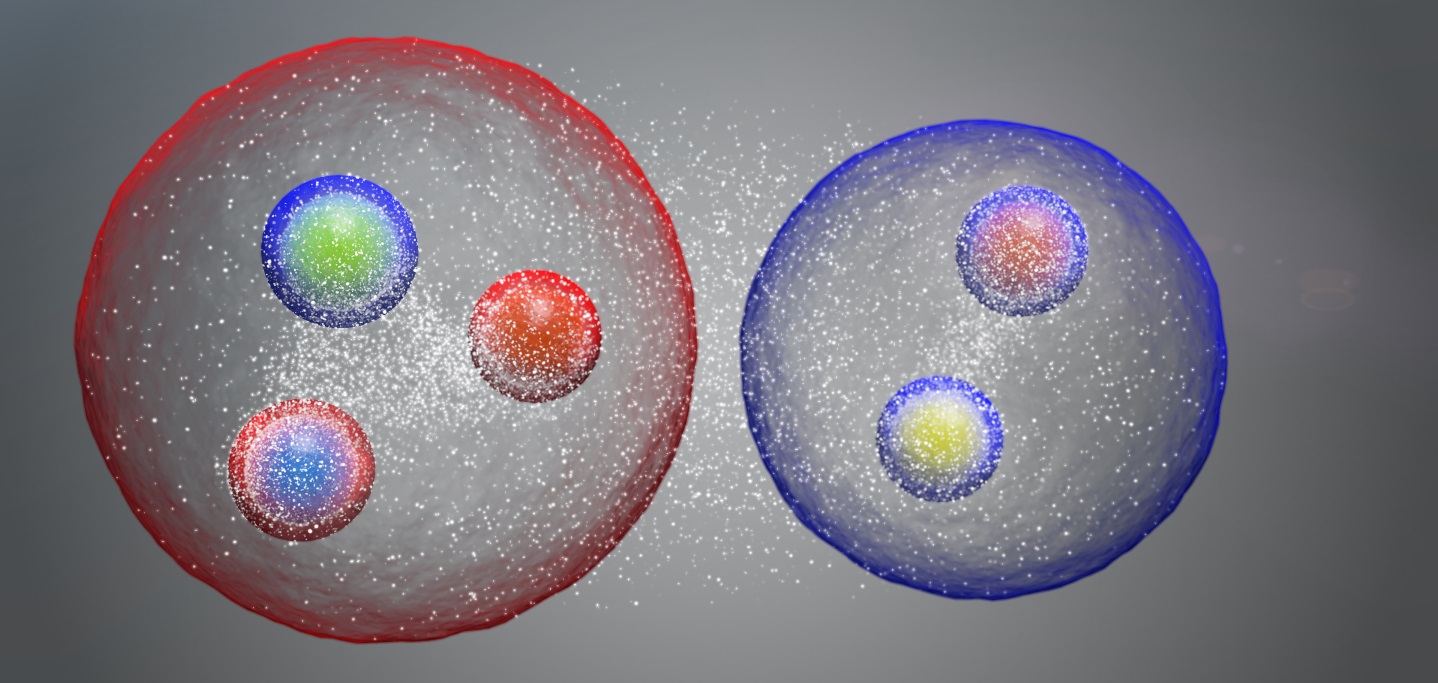
Physicists say they’ve found evidence in data from Europe’s Large Hadron Collider for three never-before-seen combinations of quarks, just as the world’s largest particle-smasher is beginning a new round of high-energy experiments.
The three exotic types of particles — which include two four-quark combinations, known as tetraquarks, plus a five-quark unit called a pentaquark — are totally consistent with the Standard Model, the decades-old theory that describes the structure of atoms.
In contrast, scientists hope that the LHC’s current run will turn up evidence of physics that goes beyond the Standard Model to explain the nature of mysterious phenomena such as dark matter. Such evidence could point to new arrays of subatomic particles, or even extra dimensions in our universe.
Continue reading “LHC Scientists Find Three Exotic Particles — and Start Hunting for More”We Might Know why There’s so Little Antimatter in the Universe
Surprising findings sometimes come in small packages. And sometimes those small packages have to be delivered by very big systems. Physicists at MIT made some surprising findings from a very small radioactive molecule that was created in an accelerator at CERN. They believe that, if studied closely enough, these new types of radioactive molecules could shine some light on why there is more matter than anti-matter in the universe.
Continue reading “We Might Know why There’s so Little Antimatter in the Universe”CERN is Planning to Build a Much Larger Particle Collider. Much, Much, Larger.
CERN, the European Organization for Nuclear Research, wants to build a particle collider that will dwarf the Large Hadron Collider (LHC). The LHC has made important discoveries, and planned upgrades to its power ensures it will keep working on physics problems into the future. But eventually, it won’t be enough to unlock the secrets of physics. Eventually, we’ll need something larger and more powerful.
Enter the Future Circular Collider (FCC.) The FCC will exceed the LHC in power by an order of magnitude. On January 15th, the FCC collaboration released its Conceptual Design Report (CDR) that lays out the options for CERN’s Future Circular Collider.
Continue reading “CERN is Planning to Build a Much Larger Particle Collider. Much, Much, Larger.”The Large Hadron Collider has been Shut Down, and Will Stay Down for Two Years While they Perform Major Upgrades
The Large Hadron Collider (LHC) is getting a big boost to its performance. Unfortunately, for fans of ground-breaking physics, the whole thing has to be shut down for two years while the work is done. But once it’s back up and running, its enhanced capabilities will make it even more powerful.
Continue reading “The Large Hadron Collider has been Shut Down, and Will Stay Down for Two Years While they Perform Major Upgrades”
CERN Declares War On The Standard Model
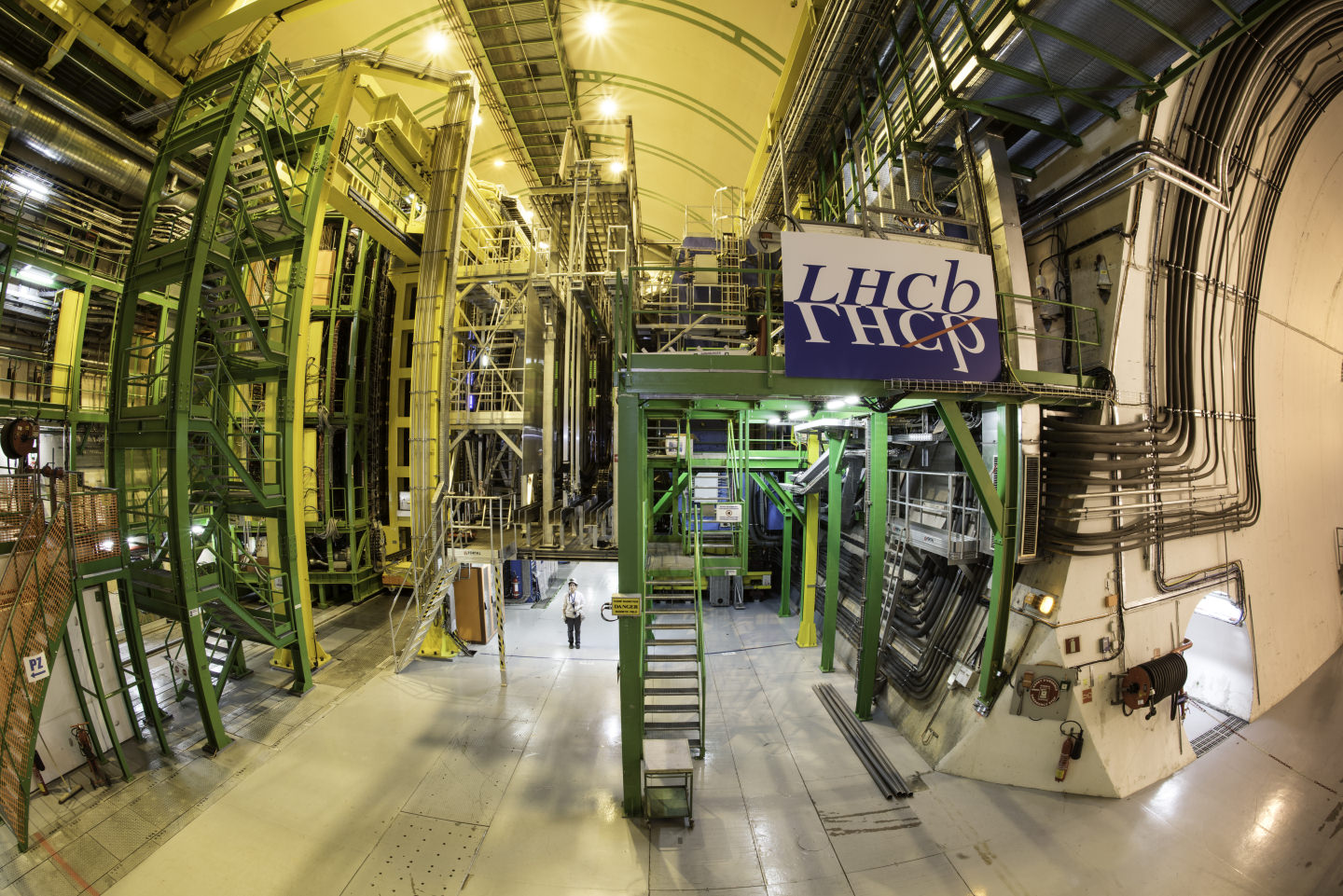
Ever since the discovery of the Higgs Boson in 2012, the Large Hadron Collider has been dedicated to searching for the existence of physics that go beyond the Standard Model. To this end, the Large Hadron Collider beauty experiment (LHCb) was established in 1995, specifically for the purpose of exploring what happened after the Big Bang that allowed matter to survive and create the Universe as we know it.
Since that time, the LHCb has been doing some rather amazing things. This includes discovering five new particles, uncovering evidence of a new manifestation of matter-antimatter asymmetry, and (most recently) discovering unusual results when monitoring beta decay. These findings, which CERN announced in a recent press release, could be an indication of new physics that are not part of the Standard Model.
In this latest study, the LHCb collaboration team noted how the decay of B0 mesons resulted in the production of an excited kaon and a pair of electrons or muons. Muons, for the record, are subatomic particles that are 200 times more massive than electrons, but whose interactions are believed to be the same as those of electrons (as far as the Standard Model is concerned).
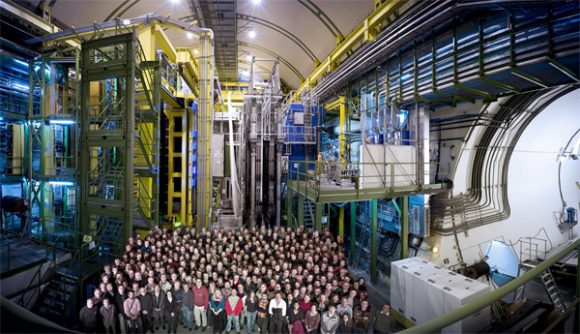
This is what is known as “lepton universality”, which not only predicts that electrons and muons behave the same, but should be produced with the same probability – with some constraints arising from their differences in mass. However, in testing the decay of B0 mesons, the team found that the decay process produced muons with less frequency. These results were collected during Run 1 of the LHC, which ran from 2009 to 2013.
The results of these decay tests were presented on Tuesday, April 18th, at a CERN seminar, where members of the LHCb collaboration team shared their latest findings. As they indicated during the course of the seminar, these findings are significant in that they appear to confirm results obtained by the LHCb team during previous decay studies.
This is certainly exciting news, as it hints at the possibility that new physics are being observed. With the confirmation of the Standard Model (made possible with the discovery of the Higgs boson in 2012), investigating theories that go beyond this (i.e. Supersymmetry) has been a major goal of the LHC. And with its upgrades completed in 2015, it has been one of the chief aims of Run 2 (which will last until 2018).
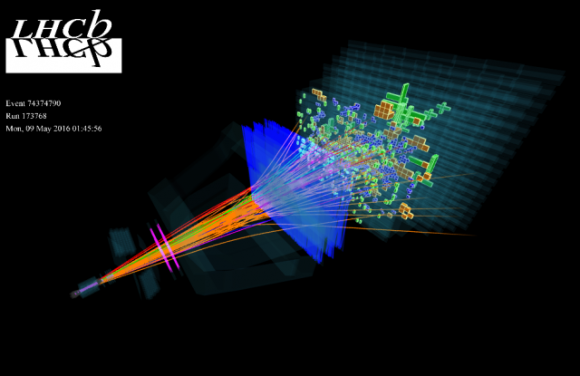
Naturally, the LHCb team indicated that further studies will be needed before any conclusions can be drawn. For one, the discrepancy they noted between the creation of muons and electrons carries a low probability value (aka. p-value) of between 2.2. to 2.5 sigma. To put that in perspective, the first detection of the Higgs Boson occurred at a level of 5 sigma.
In addition, these results are inconsistent with previous measurements which indicated that there is indeed symmetry between electrons and muons. As a result, more decay tests will have to be conducted and more data collected before the LHCb collaboration team can say definitively whether this was a sign of new particles, or merely a statistical fluctuation in their data.
The results of this study will be soon released in a LHCb research paper. And for more information, check out the PDF version of the seminar.
Large Hadron Collider Discovers 5 New Gluelike Particles
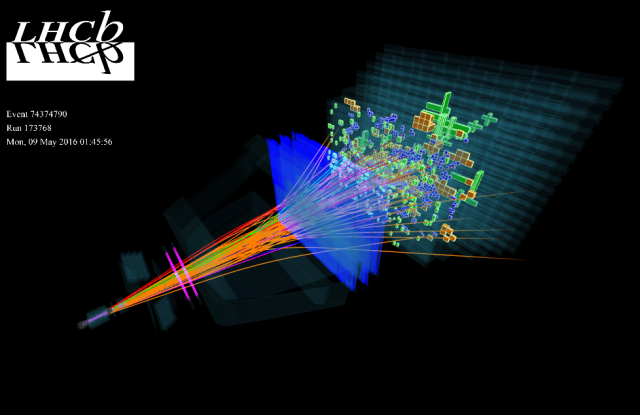
Since it began its second operational run in 2015, the Large Hadron Collider has been doing some pretty interesting things. For example, starting in 2016, researchers at CERN began using the collide to conduct the Large Hadron Collider beauty experiment (LHCb). This is investigation seeks to determine what it is that took place after the Big Bang so that matter was able to survive and create the Universe that we know today.
In the past few months, the experiment has yielded some impressive results, such as the measurement of a very rare form of particle decay and evidence of a new manifestation of matter-antimatter asymmetry. And most recently, the researchers behind LHCb have announced the discovery of a new system of five particles, all of which were observed in a single analysis.
According to the research paper, which appeared in arXiv on March 14th, 2017, the particles that were detected were excited states of what is known as a “Omega-c-zero” baryon. Like other particles of its kind, the Omega-c-zero is made up of three quarks – two of which are “strange” while the third is a “charm” quark. The existence of this baryon was confirmed in 1994. Since then, researchers at CERN have sought to determine if there were heavier versions.

And now, thanks to the LHCb experiment, it appears that they have found them. The key was to examine the trajectories and the energy left in the detector by particles in their final configuration and trace them back to their original state. Basically, Omega-c-zero particles decay via the strong force into another type of baryon (Xi-c-plus) and then via the weak force into protons, kaons, and pions.
From this, the researchers were able to determine that what they were seeing were Omega-c-zero particles at different energy states (i.e. of different sizes and masses). Expressed in megaelectronvolts (MeV), these particles have masses of 3000, 3050, 3066, 3090 and 3119 MeV, respectively. This discovery was rather unique, since it involved the detection of five higher energy states of a particle at the same time.
This was made possible thanks to the specialized capabilities of the LHCb detector and the large dataset that was accumulated from the first and second runs of the LHC – which ran from 2009 to 2013, and since 2015, respectively. Armed with the right equipment and experience, the researchers were able to identify the particles with an overwhelming level of certainty, ruling out the possibility that it was a statistical fluke in the data.
The discovery is also expected to shed light on some of the deeper mysteries of subatomic particles, like how the three constituent quarks are bound inside a baryon by the “strong force” – i.e. the fundamental force that is responsible for holding the insides of atoms together. Another mystery that this could help resolve in the correlation between different quark states.
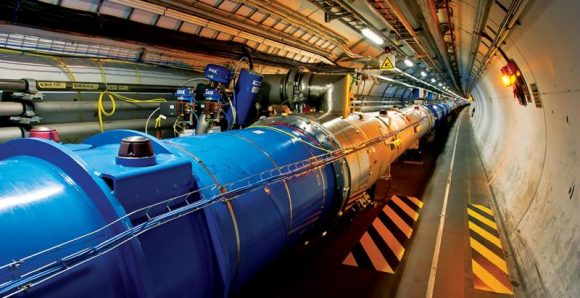
As Dr Greig Cowan – a researcher from the University of Edinburgh who works on the LHCb experiment at Cern’s LHC – explained in an interview with the BBC:
“This is a striking discovery that will shed light on how quarks bind together. It may have implications not only to better understand protons and neutrons, but also more exotic multi-quark states, such as pentaquarks and tetraquarks.“
The next step will be to determine the quantum numbers of these new particles (the numbers used to identify the properties of a specific particle) as well as determining their theoretical significance. Since it came online, the LHC has been helping to confirm the Standard Model of particle physics, as well as reaching beyond it to explore the greater unknowns of how the Universe came to be, and how the fundamental forces that govern it fit together.
In the end, the discovery of these five new particles could be a crucial step along the road towards a Theory of Everything (ToE), or just another piece in the very big puzzle that is our existence. Stay tuned to see which!
Spectrum of Antimatter Observed for First Time
Ever since the existence of antimatter was proposed in the early 20th century, scientists have sought to understand how relates to normal matter, and why there is an apparent imbalance between the two in the Universe. To do this, particle physics research in the past few decades has focused on the anti-particle of the most elementary and abundant atom in the Universe – the antihydrogen particle.
Until recently, this has been very difficult, as scientists have been able to produce antihydrogen, but unable to study it for long before it annihilated. But according to recent a study that was published in Nature, a team using the ALPHA experiment was able to obtain the first spectral information on antihydrogen. This achievement, which was 20 years in the making, could open up an entirely new era of research into antimatter.
Measuring how elements absorb or emit light – i.e. spectroscopy – is a major aspect of physics, chemistry and astronomy. Not only does it allow scientists to characterize atoms and molecules, it allows astrophysicists to determine the composition of distant stars by analyzing the spectrum of the light they emit.
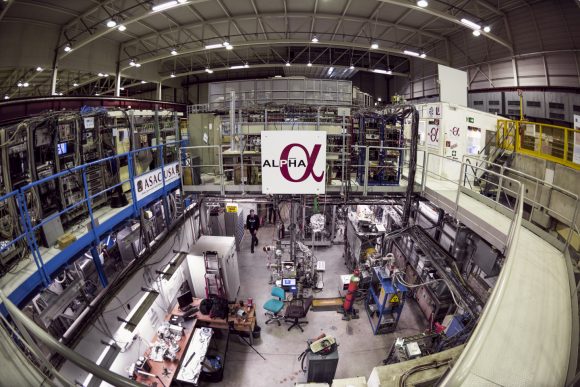
In the past, many studies have been conducted into the spectrum of hydrogen, which constitutes roughly 75% of all baryonic mass in the Universe. These have played a vital role in our understanding of matter, energy, and the evolution of multiple scientific disciplines. But until recently, studying the spectrum of its anti-particle has been incredibly difficult.
For starters, it requires that the particles that constitute antihydrogen – antiprotons and positrons (anti-electrons) – be captured and cooled so that they may come together. In addition, it is then necessary to maintain these particles long enough to observe their behavior, before they inevitable make contact with normal matter and annihilate.
Luckily, technology has progressed in the past few decades to the point where research into antimatter is now possible, thus affording scientists the opportunity to deduce whether the physics behind antimatter are consistent with the Standard Model or go beyond it. As the CERN research team – which was led by Dr. Ahmadi of the Department of Physics at the University of Liverpool – indicated in their study:
“The Standard Model predicts that there should have been equal amounts of matter and antimatter in the primordial Universe after the Big Bang, but today’s Universe is observed to consist almost entirely of ordinary matter. This motivates physicists to carefully study antimatter, to see if there is a small asymmetry in the laws of physics that govern the two types of matter.”
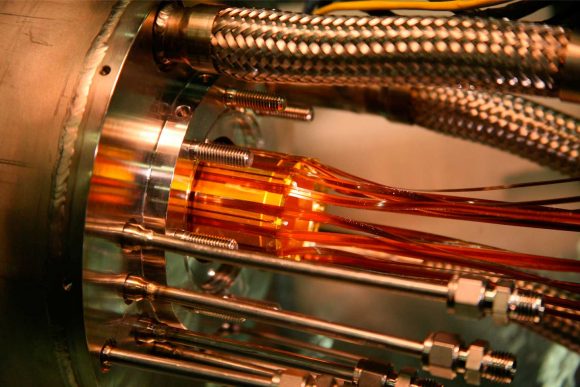
Beginning in 1996, this research was conducted using the AnTiHydrogEN Apparatus (ATHENA) experiment, a part of the CERN Antiproton Decelerator facility. This experiment was responsible for capturing antiprotons and positrons, then cooling them to the point where they can combine to form anithydrogen. Since 2005, this task has become the responsibility of ATHENA’s successor, the ALPHA experiment.
Using updated instruments, ALPHA captures atoms of neutral antihydrogen and holds them for a longer period before they inevitably annihilate During this time, research teams conduct spectrographic analysis using ALPHA’s ultraviolet laser to see if the atoms obey the same laws as hydrogen atoms. As Jeffrey Hangst, the spokesperson of the ALPHA collaboration, explained in a CERN update:
“Using a laser to observe a transition in antihydrogen and comparing it to hydrogen to see if they obey the same laws of physics has always been a key goal of antimatter research… Moving and trapping antiprotons or positrons is easy because they are charged particles. But when you combine the two you get neutral antihydrogen, which is far more difficult to trap, so we have designed a very special magnetic trap that relies on the fact that antihydrogen is a little bit magnetic.”
In so doing, the research team was able to measure the frequency of light needed to cause a positron to transition from its lowest energy level to the next. What they found was that (within experimental limits) there was no difference between the antihydrogen spectral data and that of hydrogen. These results are an experimental first, as they are the first spectral observations ever made of an antihydrogen atom.
Besides allowing for comparisons between matter and antimatter for the first time, these results show that antimatter’s behavior – vis a vis its spectrographic characteristics – are consistent with the Standard Model. Specifically, they are consistent with what is known as Charge-Parity-Time (CPT) symmetry.
This symmetry theory, which is fundamental to established physics, predicts that energy levels in matter and antimatter would be the same. As the team explained in their study:
“We have performed the first laser-spectroscopic measurement on an atom of antimatter. This has long been a sought-after achievement in low-energy antimatter physics. It marks a turning point from proof-of-principle experiments to serious metrology and precision CPT comparisons using the optical spectrum of an anti-atom. The current result… demonstrate that tests of fundamental symmetries with antimatter at the AD are maturing rapidly.”
In other words, the confirmation that matter and antimatter have similar spectral characteristics is yet another indication that the Standard Model holds up – just as the discovery of the Higgs Boson in 2012 did. It also demonstrated the effectiveness of the ALPHA experiment at trapping antimatter particles, which will have benefits other antihydrogen experiments.
Naturally, the CERN researchers were very excited by this find, and it is expected to have drastic implications. Beyond offering a new means of testing the Standard Model, it is also expected to go a long way towards helping scientists to understand why there is a matter-antimatter imbalance in the Universe. Yet another crucial step in discovering exactly how the Universe as we know it came to be.
Further Reading: CERN
Some Humans Just Sacrificed Their Jobs At CERN
Yes, despite what some people were clearly meant to believe, jobs are about the only thing being sacrificed at CERN recently. After a strange video depicting what was meant to look like a human sacrifice on its Geneva campus went viral, the European Organization for Nuclear Research (CERN) launched an official investigation to get to the bottom of it.
And while the video was quickly determined to be a prank – no doubt to mess with all those who think that CERN is evil and the Large Hadron Collider (LHC) is a “tool of the devil” – it has raised concerns about security on CERN campuses, not to mention the questionable senses of humor of some of its staff!
The video, which began circulating earlier this week, featured some disturbing imagery. Within the main square of CERN’s Geneva campus – which is home to the LHC- several figures appear to be reenacting an occult ceremony. They are seen wearing black cloaks and performing rites in front of a statue of the Hindu deity Shiva – which is on permanent display at the complex.
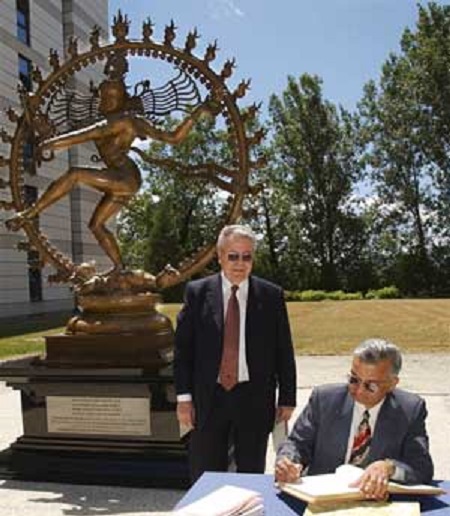
The scene climaxes with the staged stabbing of a woman, and then ends with the one filming the scene (who appears to be recording everything from a hidden location) uttering some expletives and running off. In response, the European Organization for Nuclear Research issued a statement, claiming they would be investigating.
They also stressed that they considered this to be an “internal matter”. So while the Geneva police were aware of the incident, they will not be formally involved in the investigation. In response to a request for comment from the Agency France-Presse (AFP), a CERN spokewoman replied via email:
“These scenes were filmed on our premises but without official permission or knowledge. CERN does not condone this type of spoof, which can give rise to misunderstandings about the scientific nature of our work.”
According to this same spokeswoman, the people conducting the reenactment were likely staff. While they are not able to confirm the identities of those in the video, CERN’s security measures require that those working on their premises, of have access to their facilities, have official IDs.
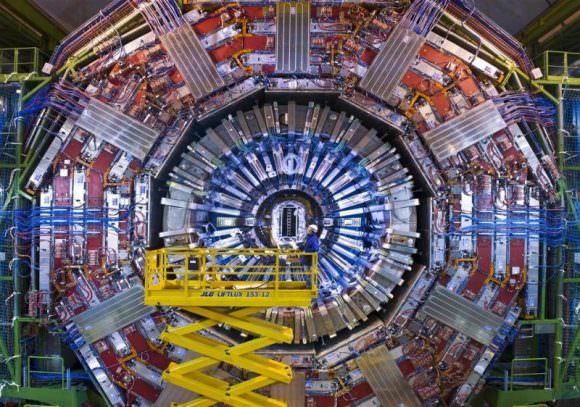
“CERN IDs are checked systematically at each entry to the CERN site whether it is night or day,” she said. “CERN welcomes every year thousands of scientific users from all over the world and sometimes some of them let their humor go too far. This is what happened on this occasion.”
The statue used for the prank was none other than the Nataraja – a depicition of Shiva as the cosmic dancer – which is on permanent display at CERN. The statue was a gift issued by the Indian government in 2004 to celebrate the country’s long-standing relationship with the research facility.
Needless to say, there’s likely to be some hell to pay once the prankster’s are identified. While the prank does seem to have a sense of irony to it – as if its specifically mocking tho conspiracy theorists who think evil things go on there – the last thing CERN wants is negative publicity, or people conducting pranks that involve sacred artwork!
If you haven’t seen the footage, be sure to check out this snippet from NewsBeatSocial below:
Further Reading: The Gaurdian

